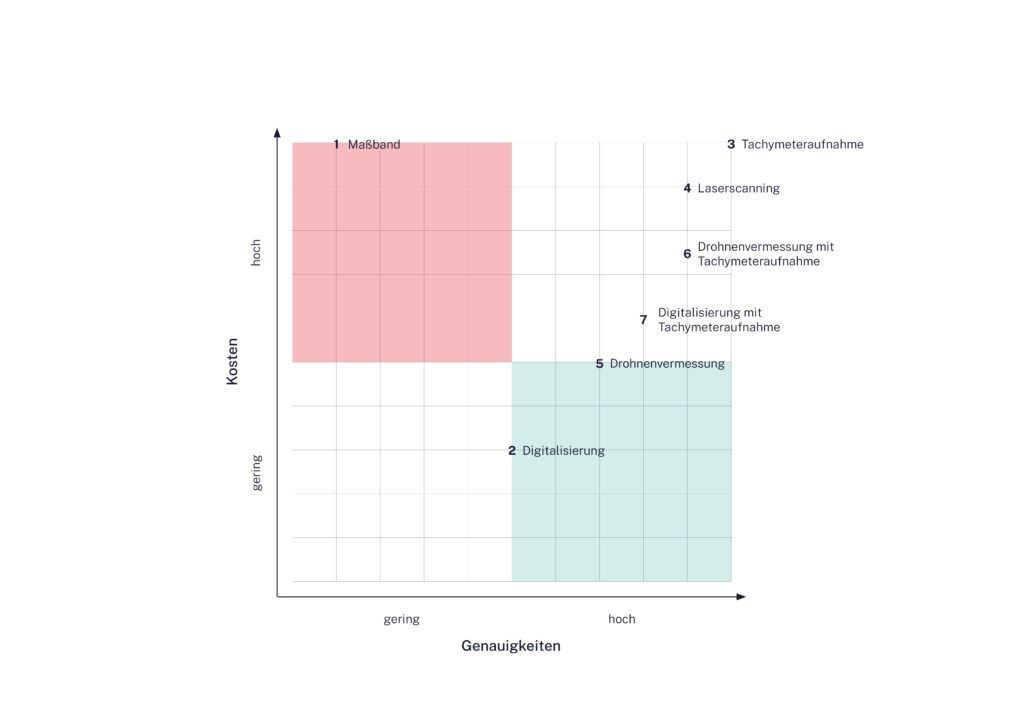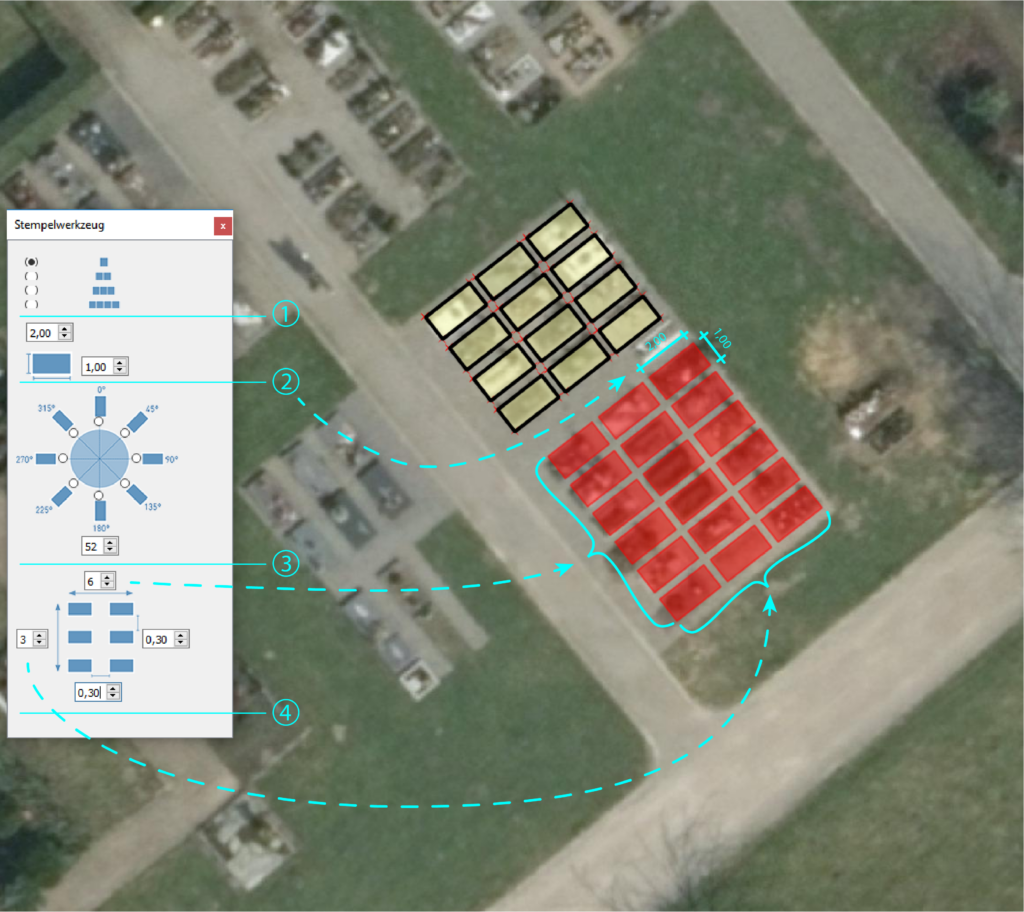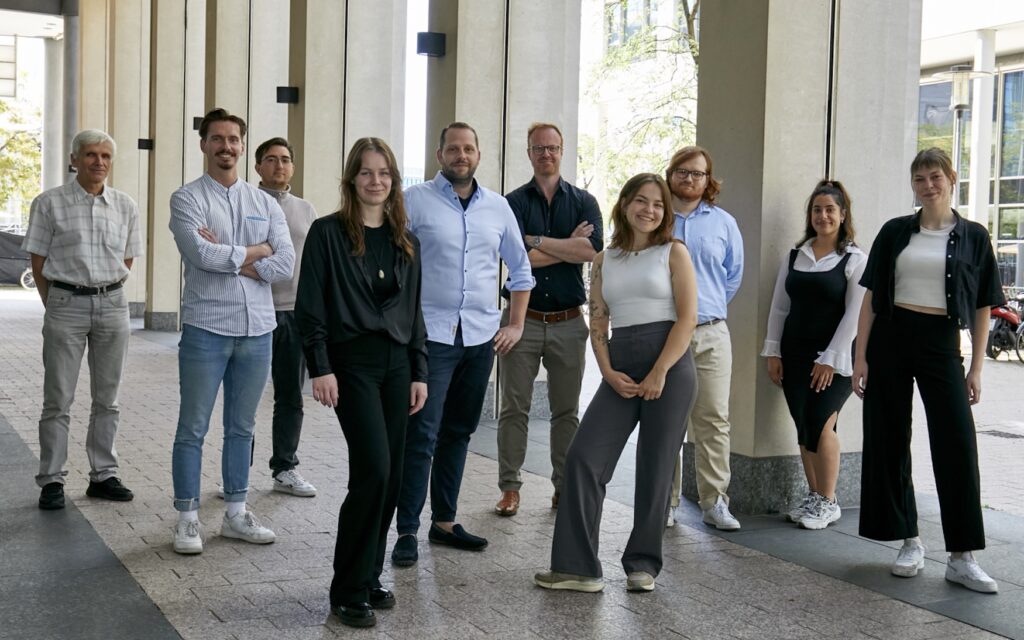Data collection is a topic that every cemetery administration must address. Due to the variety of different requirements, technical possibilities, and associated costs, choosing the right data collection method is not always straightforward.
It all starts with a central question: What are the data needed for?
Depending on the purpose of the planned data collection project, the required data collection method must be chosen. It holds true that the higher the accuracy of the data collection method, the higher the costs.
The following methods are commonly used for data collection in cemeteries:
- Measuring with a tape measure
- Digitization from orthophotos
- Tachymeter measurements
- Laser scanning
- Drone surveys
- Drone surveys combined with tachymeter measurements
- Digitization from orthophotos combined with tachymeter measurements
The aforementioned data collection methods are compared in Figure 1 in terms of costs and accuracies. Methods with high data collection costs and low accuracies (red quadrant) should be disregarded. Desirable would be methods that provide high accuracies while being associated with low costs (green quadrant). Generally speaking, such methods do not exist. Nevertheless, considering the local conditions and the required accuracies, a method can be chosen that approaches the green quadrant.

As shown in Figure 1, Method 1: Measuring with a tape measure is located in the red quadrant and can therefore be neglected in further consideration. While a tape measure is a wonderfully simple tool for determining individual dimensions, it is unsuitable for comprehensive data collection in the cemetery.
Digitization from orthophotos is the most cost-effective method of data collection in the cemetery. Orthophotos are undistorted and accurately scaled representations of the Earth’s surface, available at relatively high to medium ground resolutions (approximately 10-30 cm). During digitization, graves, pathways, and green spaces are captured from the aerial image without terrain elevations and drawn into a GIS or CAD plan. Geometric tools for cemetery use (see Figure 2) significantly accelerate data collection from aerial images. Method 2 is highly suitable for creating occupancy plans and compiling area balances. Dense tree cover significantly complicates digitization from aerial images. In such cases, there is the option to fit graves into the plan through construction or to use alternative measurement methods to capture shaded areas and maintain accuracy.

Method 3, tachymetric surveying, is frequently employed due to its high accuracy in civil engineering projects (road construction, canal construction, etc.) or official tasks of authorized surveyors (boundary surveying, boundary marking, etc.). Each survey point is located and measured on-site. The survey costs can be particularly high when dealing with a large number of measurement points. Dense tree cover poses challenges for Method 3. However, precise measurement results can still be obtained. Tachymetric surveying is particularly suitable for point and linear construction projects in the cemetery, such as building staircases or redesigning cemetery pathways. Additionally, conducting a comprehensive survey of a small cemetery using tachymetry makes sense when there is a low density of points.
In Method 4, laser scanning involves scanning the surroundings using a rotating laser beam to create a digital, three-dimensional representation of reality, also known as a point cloud. This method also achieves high accuracy. Laser scanning is especially suitable for surveys requiring a high point density, such as urban road construction. In the cemetery, Method 4 is particularly relevant for data collection in cemetery redesign projects, as a complete survey of the planning or observation area is required. All cemetery areas and existing infrastructure are measured in terms of location and elevation.
In drone surveying (Method 5), the survey area is flown over. The drone determines its own position using highly precise GNSS sensors while capturing aerial imagery. This method is particularly useful for capturing large areas, such as in mining operations. However, drone surveying encounters limitations in areas with dense tree cover and ground vegetation, where continuous area coverage is not possible. Similar to Method 3, drone surveying is very close to the green quadrant. Method 5 also serves as an excellent basis for cemetery redesign projects, as large areas with high point density can be rapidly surveyed. Drone surveys are often used as a basis for occupancy plans and area balances, especially when the orthophotos from the national surveying agencies have low ground resolutions.
Furthermore, there is the option to combine surveying methods (Methods 6 and 7) to mitigate the disadvantages of one surveying method with another.
As illustrated, there are numerous relevant methods, and each cemetery is unique. Therefore, at the beginning of each survey project, the method closest to or ideally within the green quadrant should be chosen.
Source: Cemetery Culture, November 2020





